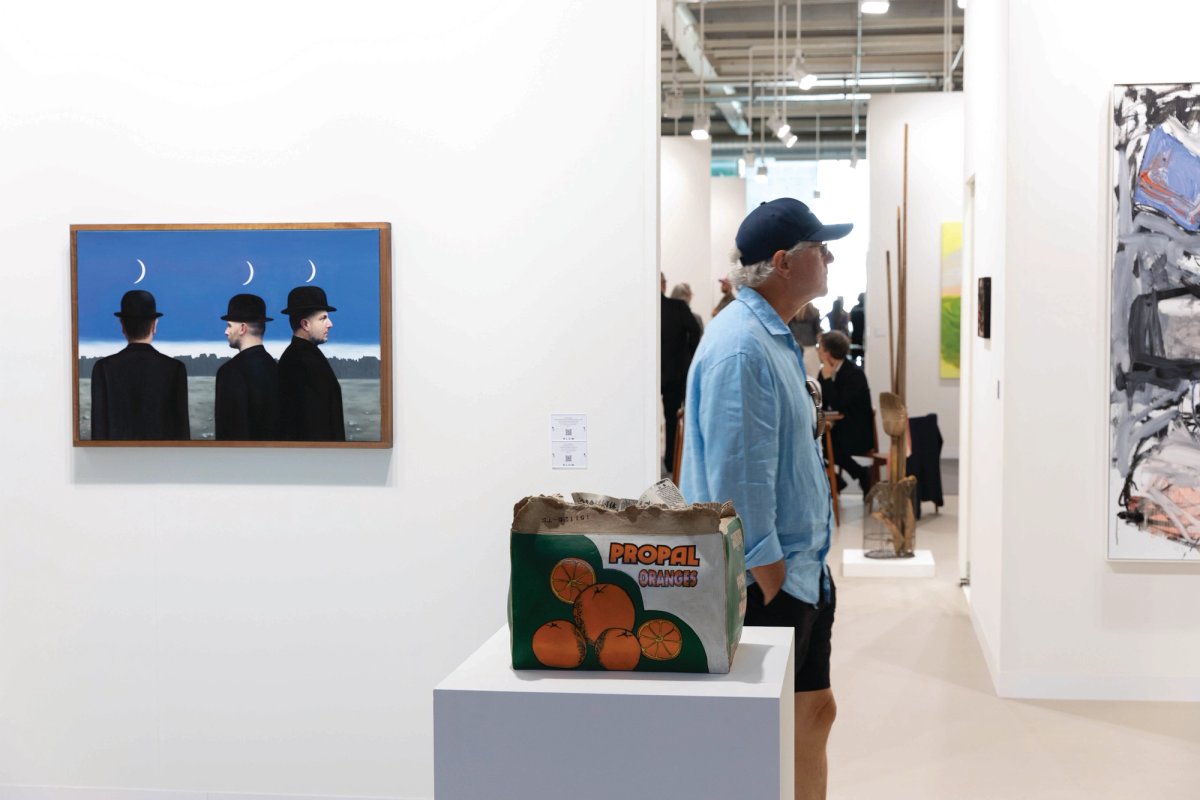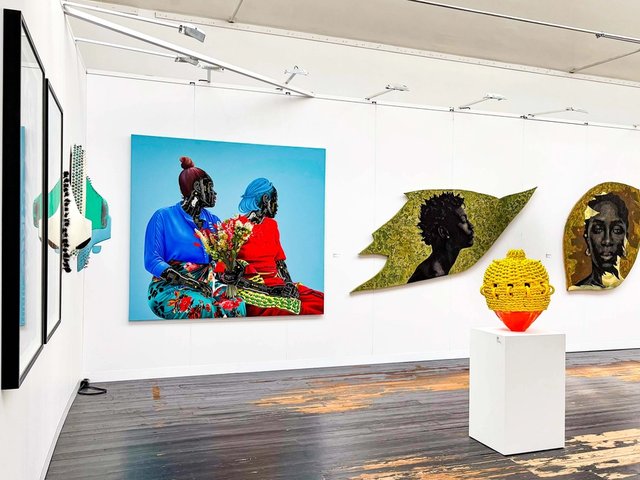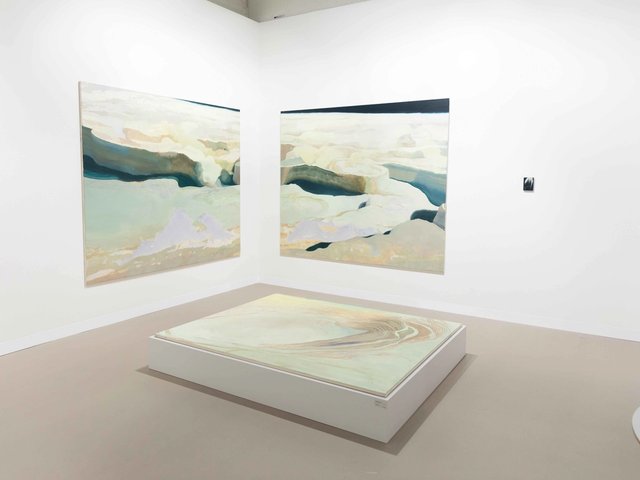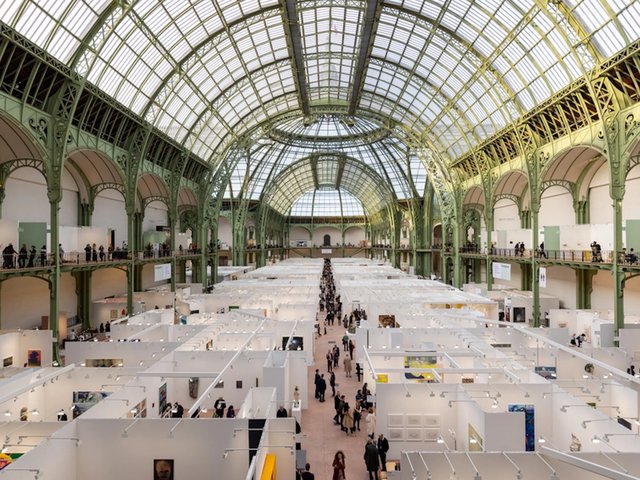Spend a day at any art fair asking the trade how business is going, and you will be rewarded with many strong opinions but few solid conclusions. This is doubly the case in a fracturing market that is, depending on who you believe, either in major recalibration, total freefall or approaching an exciting new frontier. This year at Art Basel, however, consensus does seem to have cohered around the fact that the fair presents both an attractive moment for informed buyers and an opportune business moment for galleries that are well-positioned to serve shifting demands.
“Now is the time to buy—it is the best time I have ever seen,” says Philip Hoffman, the founder of the Fine Art Group consultants. “While the quality of offerings at Art Basel this year is very good, sales are slow and expectations are modest. Deals will close, but at 20-30% below the asking price.”
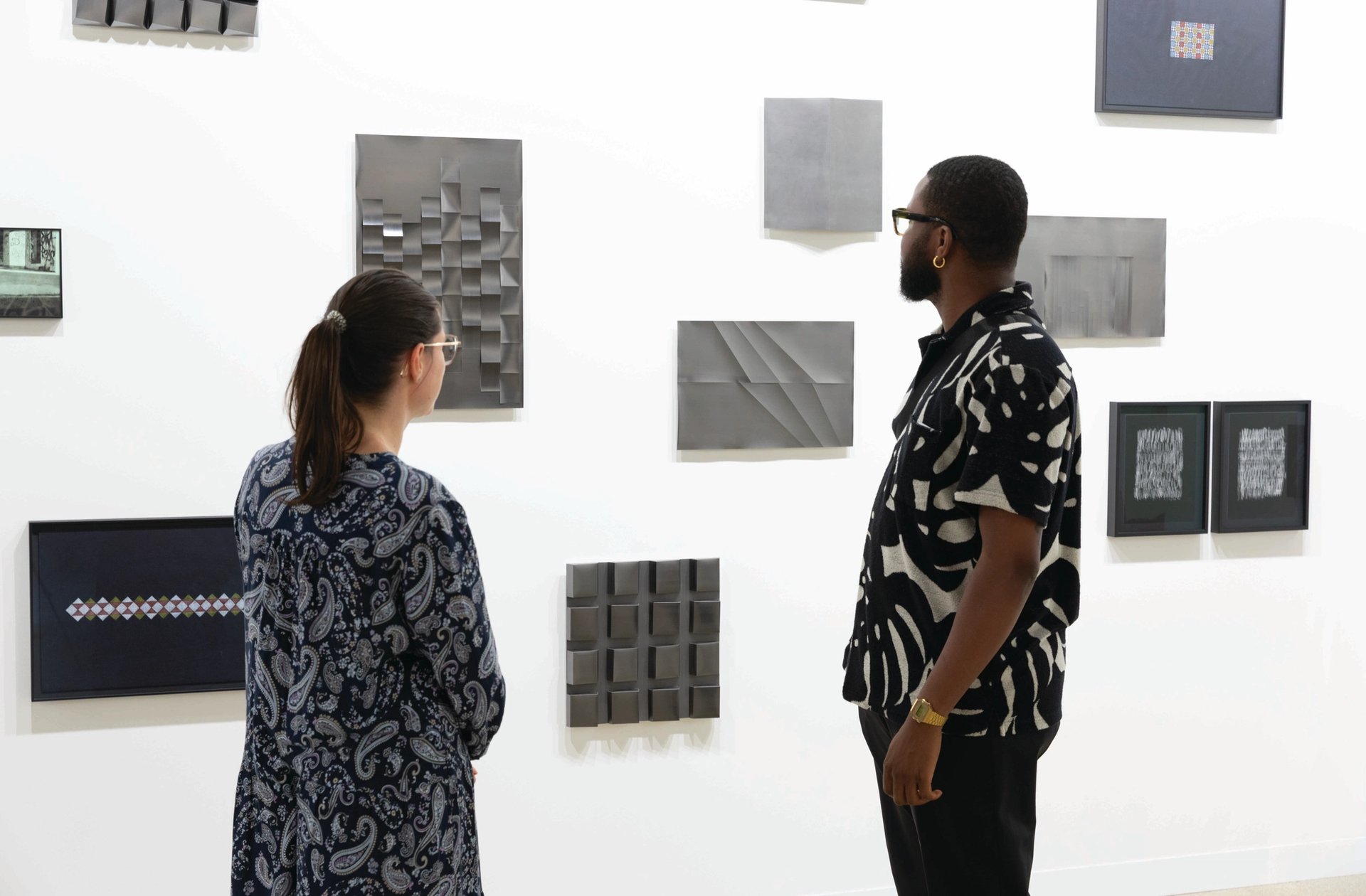
Experimenter gallery brought workspriced at $70,000 or less to the fair David Owens
This “buyer’s market”, which is what Hoffman and dozens of other advisers are terming our present moment, is primarily defined by a lack of urgency. It affords collectors the time to make considered decisions and to negotiate on prices that have sharply inflated in the past decade and remain stubbornly high. Hoffman says he is aware of “many discounts being granted in the under $1m price range, similar to what we saw in the Sotheby’s and Christie’s day sales, but people are not pulling the trigger quickly”.
Don’t talk about discounts
Open discussion of discounts in staid Switzerland remains “a taboo”, according to the adviser Ellen De Schepper. Some established figures also cast doubt on talk of their recent preponderance. “Collectors always try to knock off the price; these conversations are happening no more than usual,” says Rosemarie Schwarzwälder of Vienna’s Galerie nächst St. Stephan. Among the top sales she has made at the fair are a painting by Katharina Grosse—whose luminous spray-painted Messeplatz commission is visible from the stand—for €300,000 to a Paris collector. Yet other dealers, like Emma Robertson of The Approach in London, concede that “there is more flexibility to have those conversations than a few years ago”.
Less varnished are the opinions of Tim Blum, founder of Los Angeles, New York and Tokyo gallery Blum. “Of course, collectors have more negotiating power right now—if anyone says otherwise, they’re full of shit. We are in the midst of a paradigmatic shift, and to not acknowledge this is to peddle an outdated narrative.” Blum confirms that increased flexibility from galleries extends to the pricing of primary work, in keeping with the “ebbs and flows of certain artists, but also pointing to a more holistic change”.
“We are in the midst of a paradigmatic shift, and to not acknowledge this is to peddle an outdated narrative”Tim Blum, Blum gallery
How does a gallery adapt to these shifting tides? Blum’s stand provides a good indication. For the first time in its 25 years of taking part in Art Basel, the gallery has migrated from the first to the ground floor—which tends to attract the largest galleries, and the focus of the biggest collectors. “We have front-loaded our focus on to established works and estates, including those from the Dansaekhwa and Gutai movements,” Blum says. “There is a growing interest from collectors in entrenched histories and locked-and-loaded artists.” Among the works sold from the stand are a 2019 orange carton sculpture by the Japanese artist Kimiyo Mishima, who died last year, for $40,000, and a Yoshitomo Nara sculpture for more than $700,000. Blum notes there remains “plenty of appetite for younger artists under $75,000, provided they’re reasonably priced and have survived the last two years of secondary market speculation”. A vivid new painting by one of the few younger artists on the stand, Lauren Quin, sold for $55,000 by the end of day two.
Diversifying collections
A fair the size of Art Basel offers a wide span of geographies, and some dealers from regions with less established markets found the opening days of the fair to be a success, as prominent Western buyers continue to diversify their collections, some enticed by perceived bargains. For example, Experimenter—one of the leading contemporary art galleries in India—does not offer a single work on its stand for more than $70,000. Artists on its stand include biennial circuit favourites and rising stars such as Ayesha Sultana, Christopher Kulendran Thomas and Bhasha Chakrabarti.
“Compared to some of the galleries around us, we are extremely affordable,” says Priyanka Raja, the gallery’s co-founder. “This was a very strong opening day,” she adds. “There have been Art Basels where this has not been the case, and I’ve come away questioning the business. This is not one of those years.” Raja suspects that Art Basel made a “greater effort than usual to secure quality collectors, mainly from Europe, for the opening”.
Although prices for most canonised 20th-century artists remain prohibitively high and show little sign of budging, their lesser-known peers are benefiting. Benno Tempel, the director of the Kröller-Müller Museum in Otterlo, the Netherlands, says of its $200,000 acquisition of a sculpture by Alan Saret from Karma’s stand: “That might be a lot of money, but it’s doable when you compare that to a Sol LeWitt.” (Prices for significant LeWitt sculptures at auction range from $500,000 to $1.3m).
Demand for living artists perceived to be overlooked appears strong too. A success story of this year’s fair is Lonnie Holley, an African American outsider artist. His solo stand of sculptures and paintings referring to the US South at Premiere with the London gallery Edel Assanti sold out for prices around $85,000. The gallery’s director, Jeremy Epstein, described the reception as “overwhelmingly positive”.
Dealer behaviour is also shifting. According to the adviser Marc-Jan van Laake, “A couple of years ago, if I wasn’t with a very big client, I would only be able to speak to the gallery assistant. Now the gallery director stands up to deal with me.” One of Van Laake’s clients is in his late 30s and in talks to buy a painting by Ser Serpas, presently exhibited at her solo show at Kunsthalle Basel, for €60,000. Meanwhile, he remains locked in a conversation over a painting by Hilary Harkness at PPOW. “A few years ago, this work would have been on a long waitlist,” Van Laake says. “Now it’s available, but the price—at more than $100,000—feels too high for this artist right now.”
As the battle over prices endures, the galleries that appear to have the greatest success are those that can wait out the stalemate with diverse offerings. “We are all culpable of having made the art system so huge, which makes it harder for us to pivot when change comes,” Blum says. “But now we have to be nimbler than ever before.”


